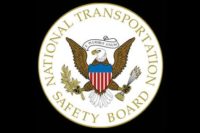 From agriculture to mining to health care, the occupational fatalities that made the 2011 top ten list compiled by the National Council for Occupational Safety and Health's (COSH) spanned many industries and highlighted notable gaps in regulatory attempts to address workplace hazards.
From agriculture to mining to health care, the occupational fatalities that made the 2011 top ten list compiled by the National Council for Occupational Safety and Health's (COSH) spanned many industries and highlighted notable gaps in regulatory attempts to address workplace hazards.
1) The list was topped by a massive grain elevator explosion in Kansas that killed six workers and was felt up to three miles away. The incident at the Bartlett Grain Co. in Atchison, Kansas on October 29 killed Chad Roberts, Ryan Federinko and Curtis Field, all of Atchison; John Burke of Denton, Kansas; Travis Keil of Topeka, Kansas, and Darrek Klahr of Wetmore, Kansas. They ranged in ages from 20 to 43.
"According to OSHA records, there have been more than 600 explosions at grain elevators, killing more than 250 people and injuring more than 1,000, in the past four decades," said COSH. "Last year, there were grain explosions or fires in several states including in Nebraska, Illinois, Ohio, South Dakota and Louisiana. Despite the obvious need, OSHA still has not issued a combustible dust standard."
No penalties or fines have been assessed yet in connection with the incident, which is still under investigation.
2) The number #2 spot was filled by a series of dust fires rather than a single event, because they all occurred at the Hoeganaes facility in Tennessee.
"Although the workers employed by the Hoeganaes Corp., a manufacturer of metal powders, were not killed in a single incident, the sheer magnitude of the loss of life and the cavalier disregard for the health and welfare of their employees warrants the company’s inclusion in this year’s list," said COSH. "Since January, five employees have died and three others have been seriously injured in three separate accidents at the company’s Gallatin location: a Jan. 31 flash fire killed Wiley Sherburne and Vernon Corley, a second flash fire on March 29 injured one, and a hydrogen gas explosion on May 27 killed Fred Tuttle, Rick Lester and Eric Hulsey and injured two others."
The U.S. Chemical Safety Board investigated and attributed the incidents to uncontrolled dust hazards and an absence of safety measures. The Board found that Hoeganaes ignored a series of smaller fires and failed to provide its workers adequate training to understand the hazards associated with the materials they handled every day. Hoeganeas was fined $129,000 -- about $24,800 per death -- by the Tennessee OSH agency.
3) Agriculture came into play again in the third position, for an incident in which two teenage girls died on July 25 while detasseling corn for Monsanto Corp. in northwestern Illinois. The 14 year-old girls –Hannah Kendall and Jade Garza -- were killed when they mistakenly wandered near a field irrigation system and were electrocuted. Eight other workers were injured in the incident.
Detasseling involves walking up and down rows of corn and removing the tassels, in order to encourage cross-pollination.
"In the days after the girls’ deaths, Monsanto asked its growers to turn off the electrically powered irrigation systems before letting detasselers into the fields," said COSH. "According to OSHA data, electrocution kills as many as 62 farm workers each year, and more than 2 million workers under the age of 20 are exposed to farm-related hazards annually. Children working on farms die at a rate that is six times higher when compared to youngsters working in other sectors. Nationally, the Obama administration has proposed strengthening child labor laws to protect teenage farm workers, but agriculture interests continue to oppose these changes. Current federal labor standards allow children as young as twelve to work on farms."
4) A confined space accident involving a company with a long history of safety violations killed two employees in Durham, North Carolina on June 8. Jesus Martinez Benitez, 32, and Luis Castaneda Gomez, 34 died after they entered a manhole in Durham, North Carolina, without proper safety equipment. "According to investigators, one of the men was killed trying to rescue the other after seeing that his colleague had been overcome by a lack of oxygen. According to media accounts, the Bethesda Volunteer Fire Department and the Durham County Hazmat Team tested the area before sending someone down into the manhole to extract the bodies and found that oxygen levels were too low to sustain life.
"The men were working for the Triangle Paving and Grading Co. on a project that had been awarded to the company through the city of Durham’s competitive bid process. An investigation by Raleigh, North Carolina, television station WNCN NBC-17 revealed the company had more than 60 construction-related safety violations and more than $200,000 in fines, including a previous worker fatality. As a result, the city of Durham, North Carolina, is considering changes to its public-bid process."
5) A trio of workers killed in an oil rig explosion in Wyoming on August 9, was part of a nearly 79 percent increase in occupational fatalities in that state from 2010 to 2011. The three died when the fuel line they were laying at an oil rig that was to be put back into production exploded. Of the 34 occupational fatalities in Wyoming last year, 10 were in natural resources and mining, according to the Wyoming Department of Workforce Services. A bill that would have increased employer penalties for workplace safety violations in the state died early last year in the Wyoming legislature.
6) The worst on-the-job accident in Las Vegas history claimed the lives of two city workers on May 18. Frank Romero, 49, and Gene Hern, 32, died when the walls of a nine-foot-deep trench they were working in collapsed on them. The men worked for the city’s utilities department laying sewer and water lines.
"An investigation by the Nevada Occupational Safety and Health Bureau later determined that the accident was completely preventable and noted that there were no support mechanisms in place to prevent the trench’s collapse and that the trench had not been inspected before the two were sent into it. The Nevada bureau has issued fines totaling nearly $81,000 in connection with the incident."
7) In the seventh position on the list, Jorge “Louie” Medina, 56, died after sustaining third-degree burns over 90 percent of his body and Steven Nichols, 59, was also killed in a blast at a chemical plant in Louisville, Kentucky that had not been inspected for four years. The March 21 explosion at a Carbide Industries plant caused a blaze that fire crews had to allow burn out over four days, because the highly flammable calcium carbide produced by the plant reacts violently when it comes into contact with water.
"Emergency responders said Medina and Nichols were in a control room on the second floor of the five-story building, just above a furnace where the calcium carbide was produced. According to press accounts, Carbide Industries had a lengthy record of safety violations and the plant had not been inspected for four years."
8) The dangers of workplace violence are evident in the incident cited by COSH for the eight spot; the death of a 25-year-old group home worker at the hands of a resident with a long history of both violence and mental illness. Stephanie Moulton was alone in the building when she was stabbed to death on January 20 in Revere, MA by Deshawn Chappell, who fled in her car after killing her.
"OSHA determined that the North Suffolk Mental Health Association, which operated the facility where Moulton worked, exposed employees to the "hazard of physical assault" while providing services to clients and failed to develop and implement adequate measures to protect employees against such assaults and fined the mental health agency $7,000. Moulton’s death precipitated a statewide debate on whether or not years of budget cuts have eroded the Massachusetts mental health system to the point where workers’ lives are threatened."
Workplace violence is among the top four causes of death in workplaces during the past 15 years. "According to the Bureau of Labor Statistics, more than 3,000 people died from workplace homicide between 2006 and 2010, and an average of more than 15,000 nonfatal workplace injury cases was reported annually during this time. OSHA issued a directive targeting workplace violence in September, but the problem persists."
9) An incident in which a 23-year-old was killed while laying a natural gas line in Bangor, Maine underlines the small size of the fines that OSHA has to work with. Danny Dodge of Jackson, Maine was killed on July 28 when a backhoe rolled over and crushed him. OSHA concluded that the backhoe overturned when it was operated on a slope ranging from 32- to 40-degree grade and determined that the violations committed by Dodge's employer, Bowdoin Excavations LLC were serious but not "wilful," earning Bowdoin $13,600 in proposed fines.
"The fines assessed by OSHA in connection with Dodge’s death, as low as they were, were higher than those assessed in a typical workplace fatality. Under existing OSHA regulation, the maximum fine for a serious workplace safety violation is only $7,000, a figure that has not been updated since 1991. The average OSHA fine issued in connection with a workplace fatality is only $5,900, according to recent Congressional testimony by OSHA chief executive Dr. David Michaels."
10) Coal mining continues to be one of the most dangerous industries in the country, and the worker deaths don't always occur in mines deep underground. Darrel Winstead and Samuel Lindsey, who worked for Armstrong Coal in Kentucky, were killed on October 29 when they were buried by falling rocks after a highwall collapsed on top of the truck they were in.
According to media accounts, Armstrong Coal had been cited in April by the federal Mine Safety and Health Administration (MSHA) for failing to stabilize a highwall. The incident is still under investigation.
The MSHA says 13 coal miners were killed on the job through September 2011.







